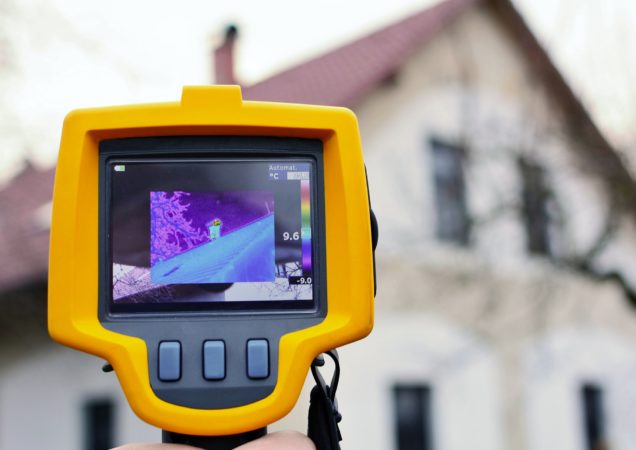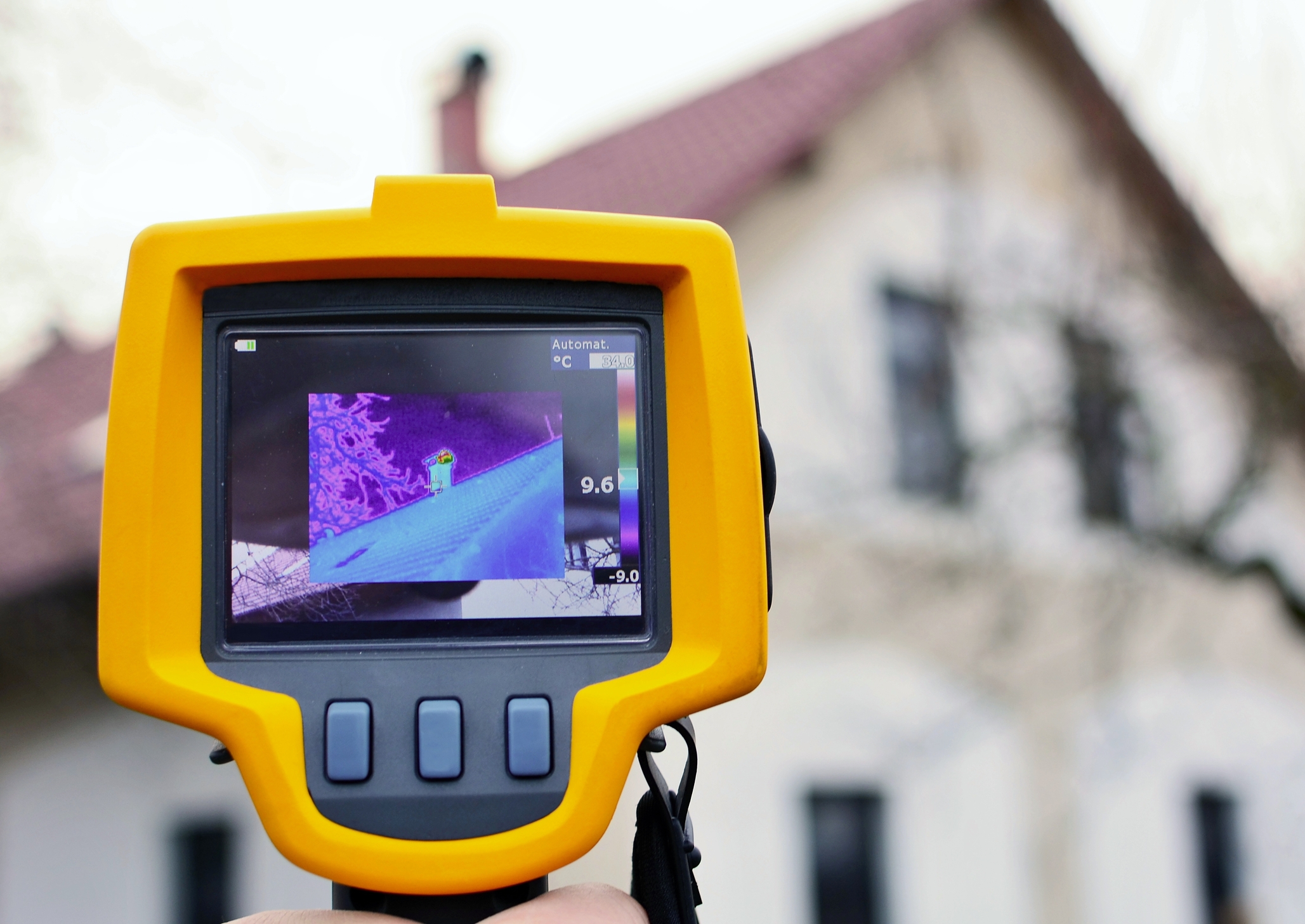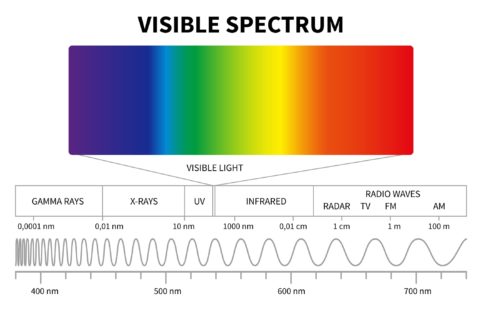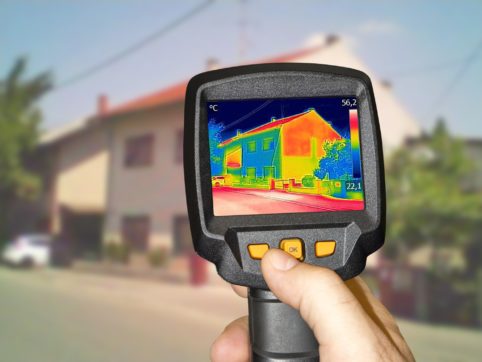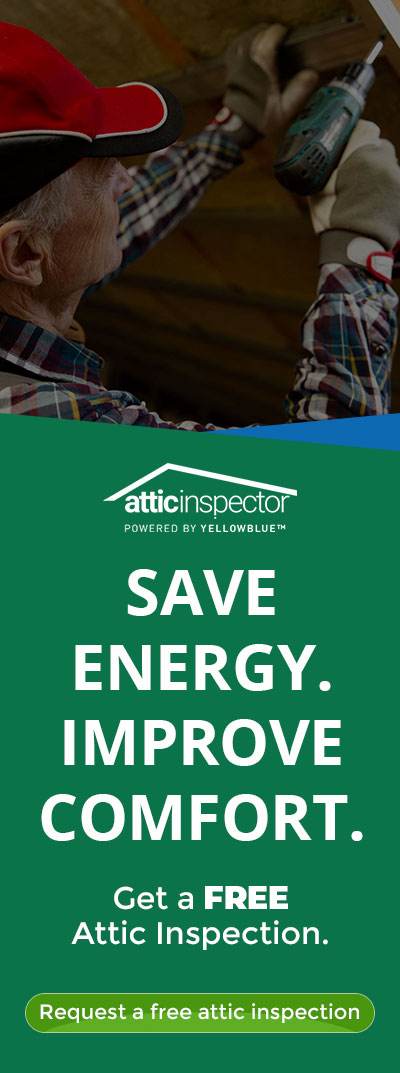Ever feel like your home is colder than it should be?
Or maybe it’s hotter than you want it to be?
Your indoor temperatures — and ultimately, your comfort levels — can almost always be traced back to infrared heat and your home’s insulation and air sealing.
Unfortunately, there’s not really a way for homeowners to visually see the issues — at least not until recent years. Thermal imaging cameras clearly show the problem-areas in your home with colorful heat-sensitive visuals. Combine these cameras with a trained healthy home professional, and you’re one step away from achieving optimal home comfort and health.
Before we hop into the top thermal imaging cameras being used, let’s take a look at the principles of infrared heat.
[toc]
A look at how infrared heat affects you…
Objects emit infrared radiation.
The higher the temperature, the higher the amount of radiant heat. That means more infrared heat.
A stark contrast between one surface’s heat signature and the one right next to it could be the result of a glaring issue in its surrounding area. This is especially important for homes because one glaring issue could lead to similar issues in a different spot.
For example, if your attic access hatch has a higher level of infrared heat emitting from it than the rest of the ceiling, that means there could be an insulation or air leakage issue coming from the attic door. If the hatch does have an insulation issue, that could be a sign that the attic as a whole is lacking proper insulation.
Since infrared light sits right outside the range of visible light, the only way we can identify these problem areas is by feeling it (cold or hot drafts).
Though, feeling it isn’t very helpful. The more you experience hot and cold spots in your home, the more you become accustomed to living with it. The problem goes unnoticed and continues to wreak havoc on the health and comfort of your home.
That’s where thermal imaging cameras come in. A healthy home expert equipped with a thermal imaging camera can pinpoint where certain issues are coming from and combine their technical knowledge of the issue with clear imagery to match what the homeowner is feeling.
Healthy home experts have the know-how to efficiently find the problem-areas in a home. While every home is different, many of their comfort issues are rooted in the same causes: issues with insulation, air sealing, and/or ventilation. Independently authorized yellowblue™ dealerships have experienced professionals that use tools like thermal imaging cameras to offer sound solutions to homeowners.
What To Look For When Buying A Thermal Imaging Camera
So thermal imaging cameras = better insight on the home. Great.
But this opens the door to another question: which thermal imaging camera is the best?
Different cameras have different capabilities, but three of the biggest factors that come into play for home inspectors are:
- Price
- Temperature range
- Resolution
Some cameras are cheap and very easy to use; however, they may be lacking in resolution and range of temperature. On the other hand, you can find some high-ticket cameras that have better resolution for sensing the infrared heat.
Additionally, you will need to know the exact job you want the camera to do. There is no point in buying the most expensive camera if you aren’t going to use half of its features. Know the work that you are looking to accomplish, and base your product search from that goal.
Best Thermal Imaging Cameras for Home Inspection
FLIR
You can’t do any kind of thermal imaging camera breakdown without mentioning Flir.
Flir is a staple in the thermal imaging space and has been a go-to brand for inspection experts for years.
Here are some of Flir’s top cameras:
- Flir One — One of Flir’s most popular thermal imaging cameras among experts is the Flir One. It plugs right into a smartphone and converts the regular camera into a thermal imaging camera.
- Flir C3
- Flir E8
Whether you’re looking for a camera for home inspections, facilities maintenance, HVAC assessments, or electrical repair, Flir’s product line has you covered.
Fluke
Another leader in thermal imaging cameras is Fluke. Founded in 1948, Fluke has been providing experts with portable, reliable, and quality products for seven decades. Two of the top thermal imaging cameras from Fluke are:
- Fluke Ti480 – Able to produce high quality images while also being durable enough to be clipped on to a bag, the Fluke Ti480 combines some of the best attributes into one tool.
- Compact Fluke PTi120
Fluke offers some of the most durable thermal imaging cameras on the market and is a fan favorite among healthy home professionals.
SEEK
Seek Thermal provides inspection experts with some of the newest models on the market. They offer modern tools that increase the safety and insight that experts can offer. Two of their most popular series are:
- Reveal Series
- Compact Series – Just like the Flir One models from Flir, the Compact Series is compatible with smartphones. Each model offers a simple, portable, and lightweight tool for experts on the go.
SEEK’s smartphone-compatible models are engineered to run on low battery while its “Reveal” series have long-lasting batteries. Combining efficient battery life with the top-of-the-line features, SEEK has quickly become a go-to brand when it comes to thermal imaging cameras.
Biggest Value Factors For Thermal Imaging Cameras
Price
For experts in the field looking to use their equipment, budget is an inevitable factor that needs to be considered.
While some cameras offer advantages in performance, these advantages are often mirrored in their price. Below is a price comparison of the popular cameras from Flir, Fluke, and Seek.
| Brand | Model/Series | Price |
|---|---|---|
| Flir | Flir One | $199 - $499 (varies by model) |
| Flir | Flir C3 | $699 |
| Flir | Flir E8 | $2,999 |
| Fluke | Fluke Ti480 | $9,999 - $15,687 (varies by distributor) |
| Fluke | Compact Fluke PTi120 | $899 - $1,320 (varies by distributor) |
| Seek | Reveal Series | $399 - $799 (varies by model) |
| Seek | Compact Series | $249 - $499 (varies by model) |
The less expensive models offer a cost-efficient way to offer value to homeowners and industry professionals. However, if the budget allows, there are options that offer higher durability and image quality for those that need it.
Thermal Camera Sensor Resolution
The greater thermal sensor resolution a camera has, the clearer the image resolution, and the further an inspector can be from the area being measured.
Be careful when reading camera specifications; visual quality may be high, but if the sensor resolution isn’t high, the display quality spec is virtually useless.
Look at sensor resolution first. The higher the resolution, the further you can be from the surface, and the better chance you have at getting a clear display image.
| Brand | Model/Series | Sensor Resolution |
|---|---|---|
| Flir | Flir One | 160 × 120 (One) 80 × 60 (Pro LT) 80 x 60 (Gen 3) |
| Flir | Flir C3 | 80 x 60 |
| Flir | Flir E8 | 320 × 240 |
| Fluke | Fluke Ti480 | 640 x 480 |
| Fluke | Compact Fluke PTi120 | 120 x 90 |
| Seek | Reveal Series | 206 x 156 320 x 240 (RevealPro and RevealFirePro) |
| Seek | Compact Series | 206 x 156 320 x 240 (Compact Pro) |
Thermal Camera Temperature Range and Other Factors
Another factor that should be accounted for is temperature range.
Since home inspectors need to determine where air leakages, insulation issues, and lack of ventilation are causing problems, the surface area’s temperature will need to be assessed. Broad temperature ranges in thermal imaging camera can display just that.
There are of course more factors that should be considered when looking at thermal imaging options on the market. Different factors may weigh more than others.
Is the camera easy to use? Is it durable? Can it be clipped to a work bag? Does it have wifi capabilities?
Some other important camera specifications include:
- Field of view
- Color palettes
- Compatibility with phone (for accessory cameras like Flir One and Seek Compact Series)
- Display resolution
- Capture modes (video, time lapse, etc.)
- Wifi connectivity
- Non-Operating Temperature
- Battery life / battery type
While these cameras are changing how all attic inspections are done, the importance of these factors is subjective to the person that will be using them.
Check out the full specs of the cameras listed above with these links below in the full comparison chart below:
| Brand | Model/Series | Price | Sensor Resolution | Temperature Range |
|---|---|---|---|---|
| Flir | Flir One | $199 - $499 (varies by model) | 160 × 120 (One) 80 × 60 (Pro LT) 80 x 60 (Gen 3) | -4°F to 752°F (One) -4°F to 248°F (Pro LT) -4°F to 258°F (Gen 3) |
| Flir | Flir C3 | $699 | 80 x 60 | 14°F to 302°F |
| Flir | Flir E8 | $2,999 | 320 × 240 | –4°F to 482°F |
| Fluke | Fluke Ti480 | $9,999 - $15,687 (varies by distributor) | 640 x 480 | 14°F to 1,832°F |
| Fluke | Compact Fluke PTi120 | $899 - $1,320 (varies by distributor) | 120 x 90 | -4°F to 302°F |
| Seek | Reveal Series | $399 - $799 (varies by model) | 206 x 156 320 x 240 (RevealPro and RevealFirePro) | -40˚F to 626˚F -4F° to 1,022F° (RevealFirePro) |
| Seek | Compact Series | $249 - $499 (varies by model) | 206 x 156 320 x 240 (Compact Pro) | -40F° to 626°F |
Frequently Asked Questions
Why are thermal imaging cameras so low resolution?
Thermal imaging cameras are detecting a different wavelength of light than normal cameras detect. In order to display this different wavelength of light, thermal imaging cameras need to use larger pixels, which creates a lower resolution for the user. In order to display the results with smaller pixels, the camera’s lens, sensors, and general handling equipment would need to be much larger, which would drive up the price.
Why are thermal imaging cameras so expensive?
Put simply, the lens, sensor, and thermal imaging capture technology used in these devices is more expensive to manufacture than in a visible-light camera.
Is there a thermal imaging camera app?
The Therm-App for Android provides some of the functionality that other thermal imaging cameras provide. However, for full and most accurate results, it’s worth the investment in a device specifically designed for thermal imaging, like the models described above.
How far can a thermal imaging camera see?
This depends on which camera you are using. The FLIR One can see about 30m (or 100’) under good conditions, while the Fluke Ti480 is more up close, with standard lenses measuring at a maximum distance of about 6 inches (for this model, distance can be increased with add-ons). For exact distances, always be sure to check product specifications from the manufacturer before purchasing.
Can thermal imaging cameras see through walls?
No, they cannot. At least not in the way most people think. Walls typically have enough insulation and thick building material to block the sensor’s readings from going beyond the wall itself. If you point a thermal imaging camera at a wall, it will read the heat readings coming off the wall itself.
Can thermal imaging detect mold?
Technically, no, but it can help. Thermal imaging can detect higher concentrated areas of moisture or cool spots, which can be prime locations for mold growth.
Can thermal imaging detect water damage or leaks?
Yes and no, for the same reasons as mold detection. By finding cool spots inside a wall or behind doors, home inspectors can find likely locations of leaking water or water damage.
Get Professional Advice & Healthy Attic Solutions
Want a free attic inspection from a trusted independent authorize yellowblue dealer? We’re eager to hear from you!
Use this link to contact us and check out atticinspector.com, powered by yellowblue™, to learn more about our free inspections!
If you’re interested in providing increased value to your customers by providing eco-friendly technologies, we want to hear from you too! Contact us here to see how you can join one of the fastest growing companies in the healthy home industry!

